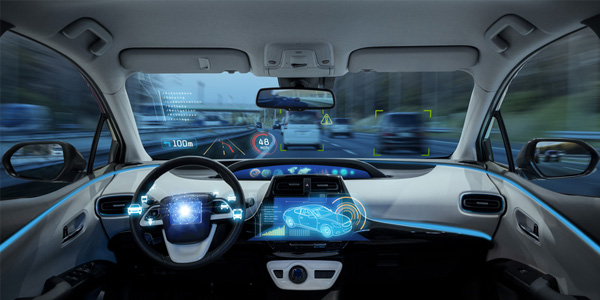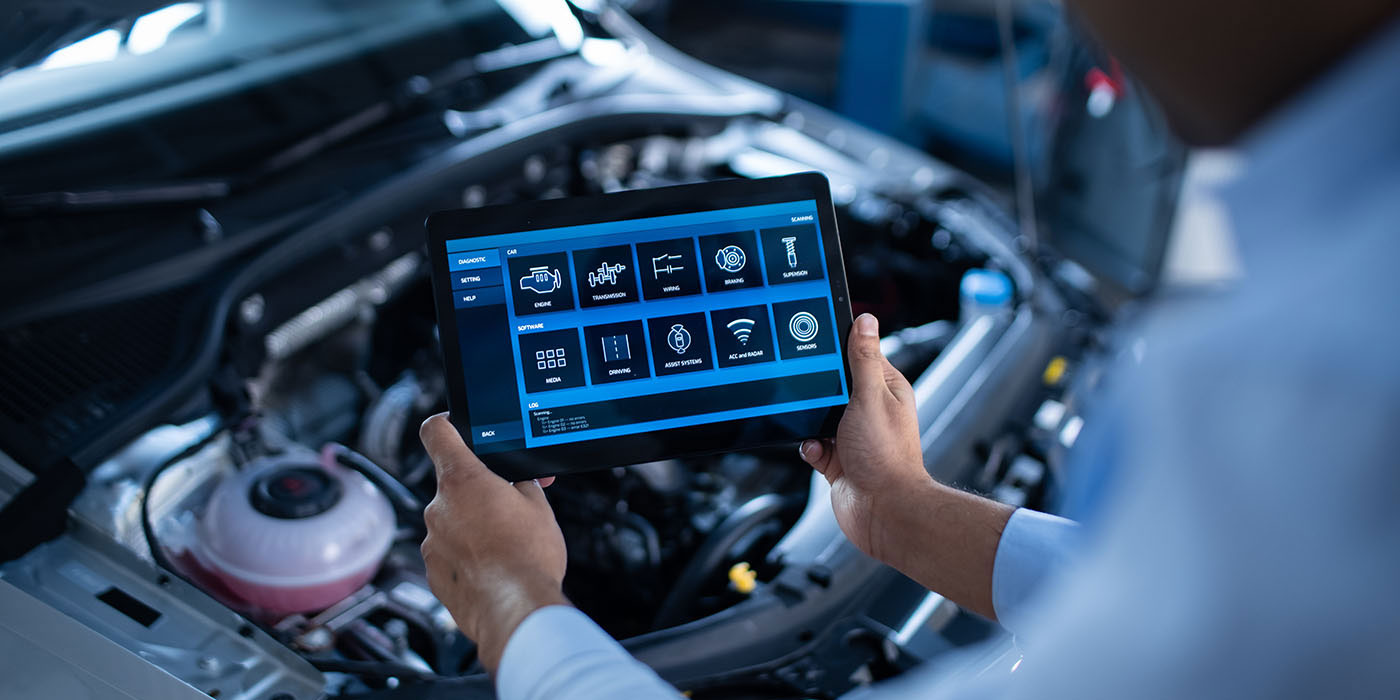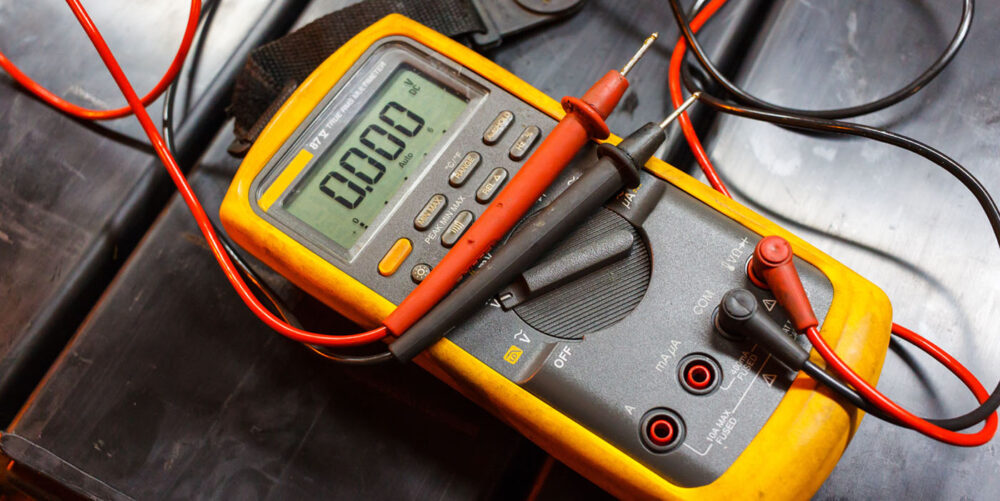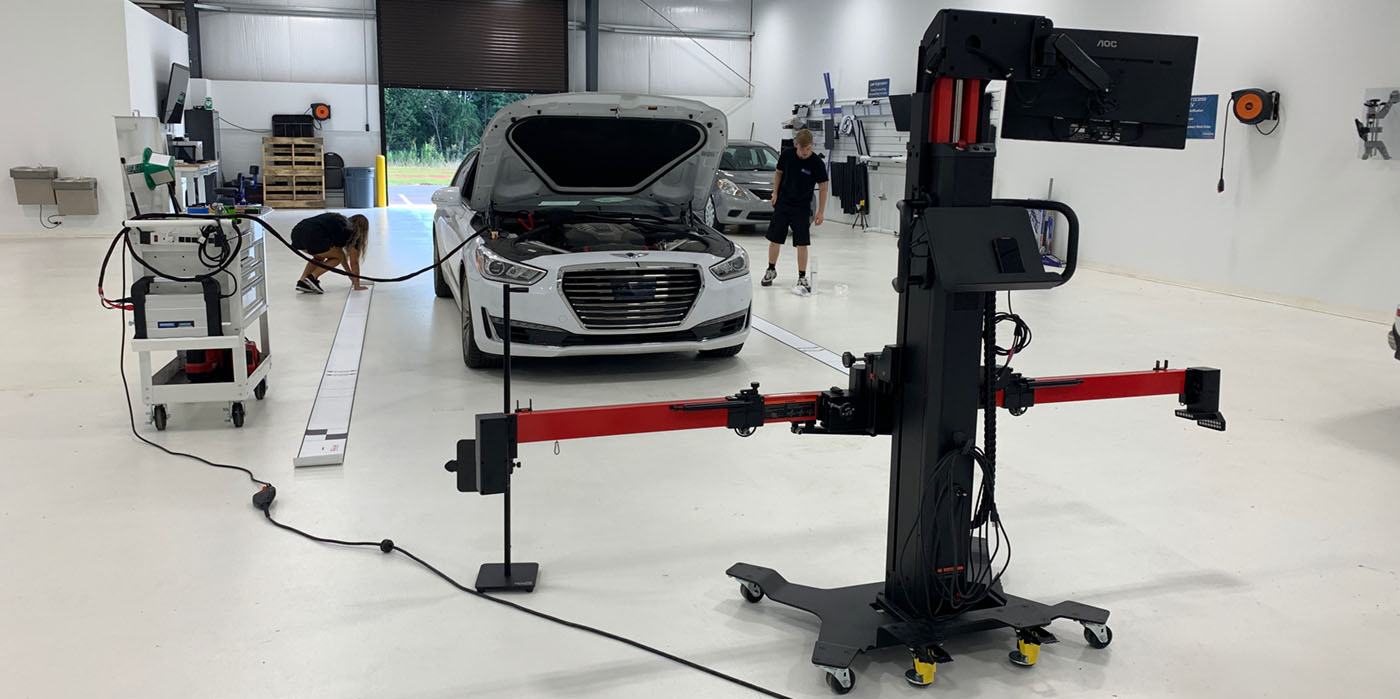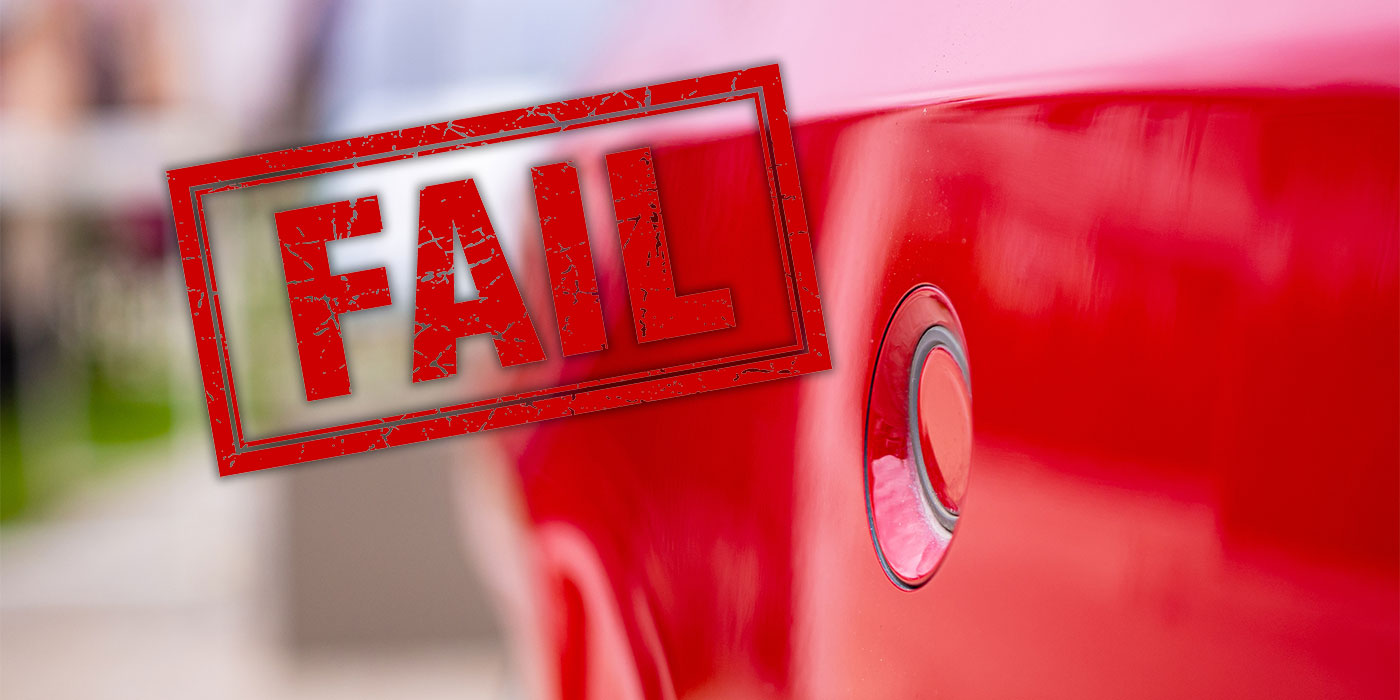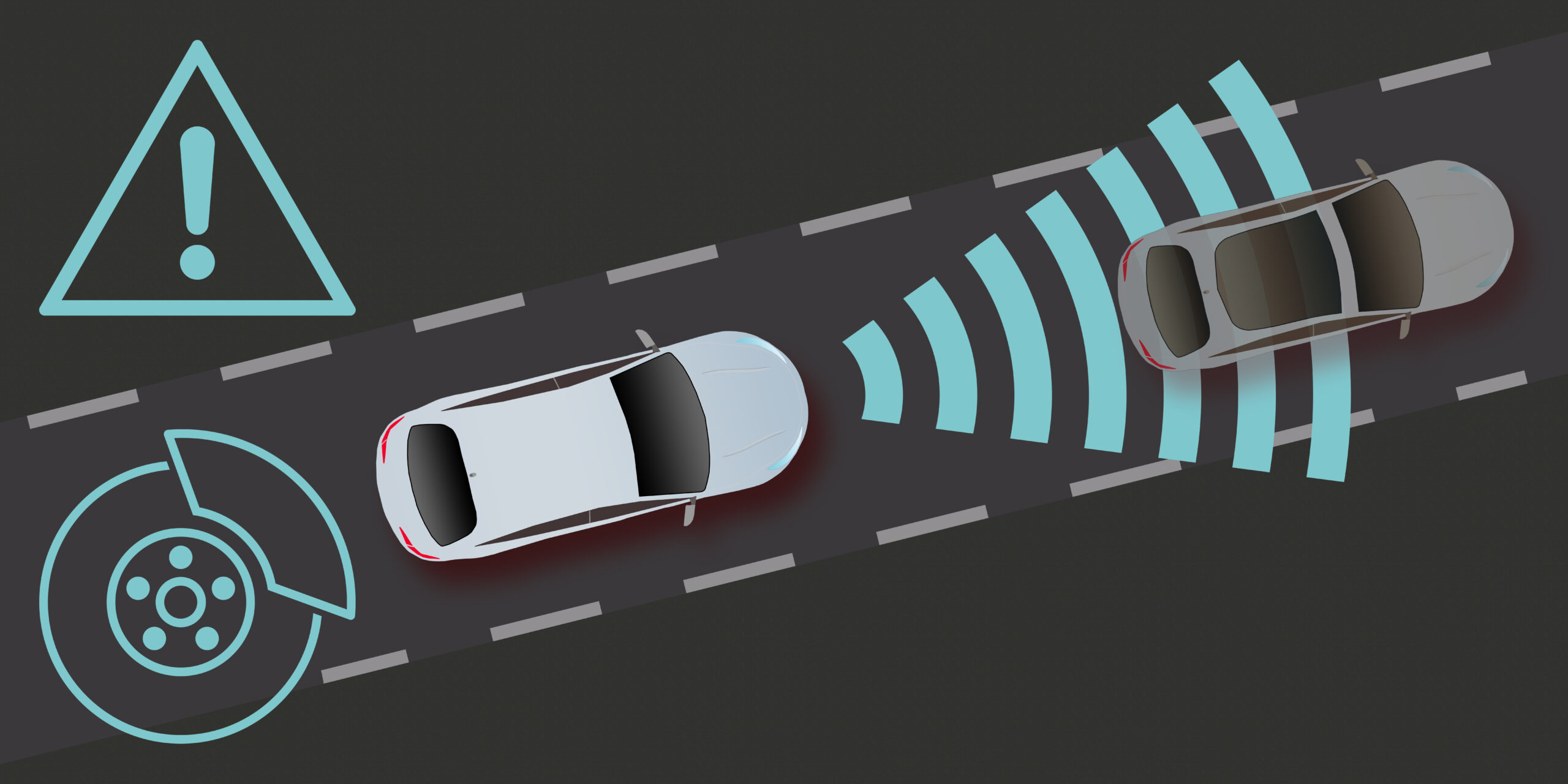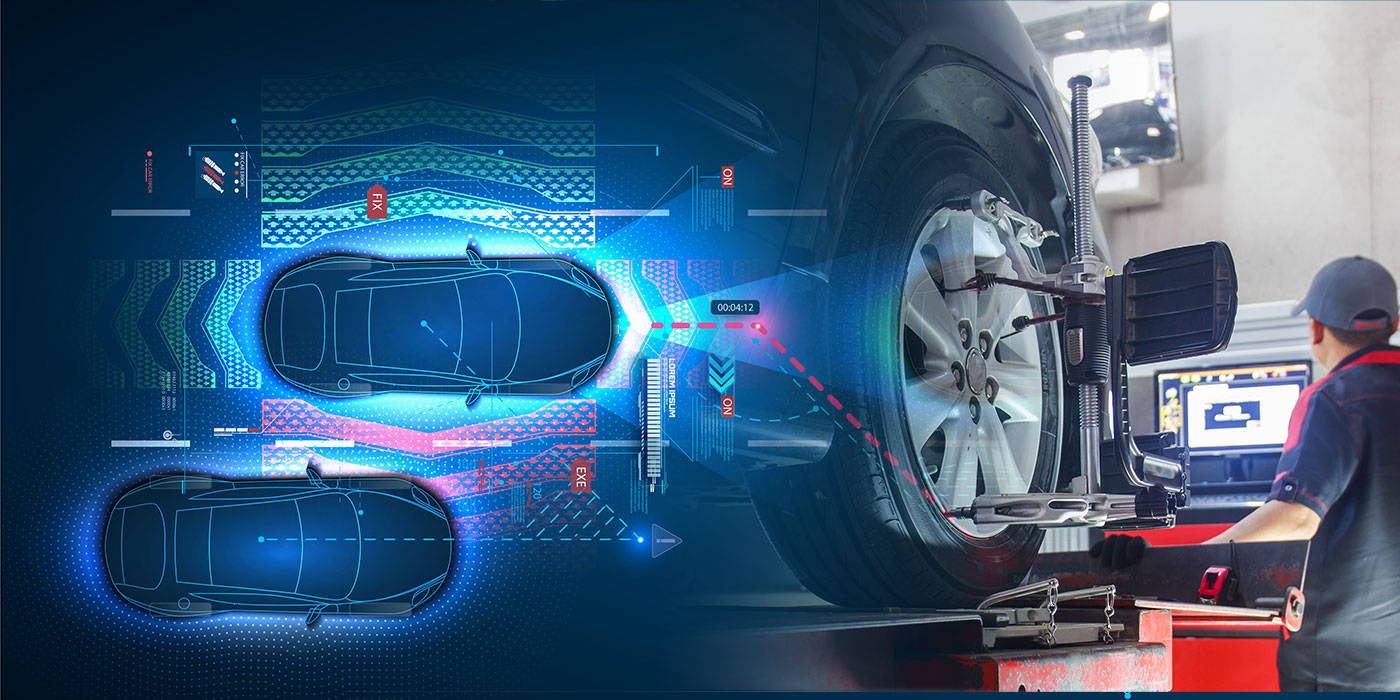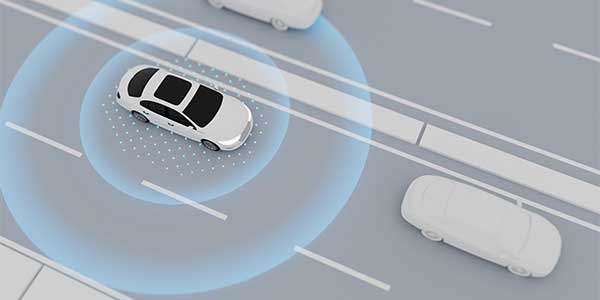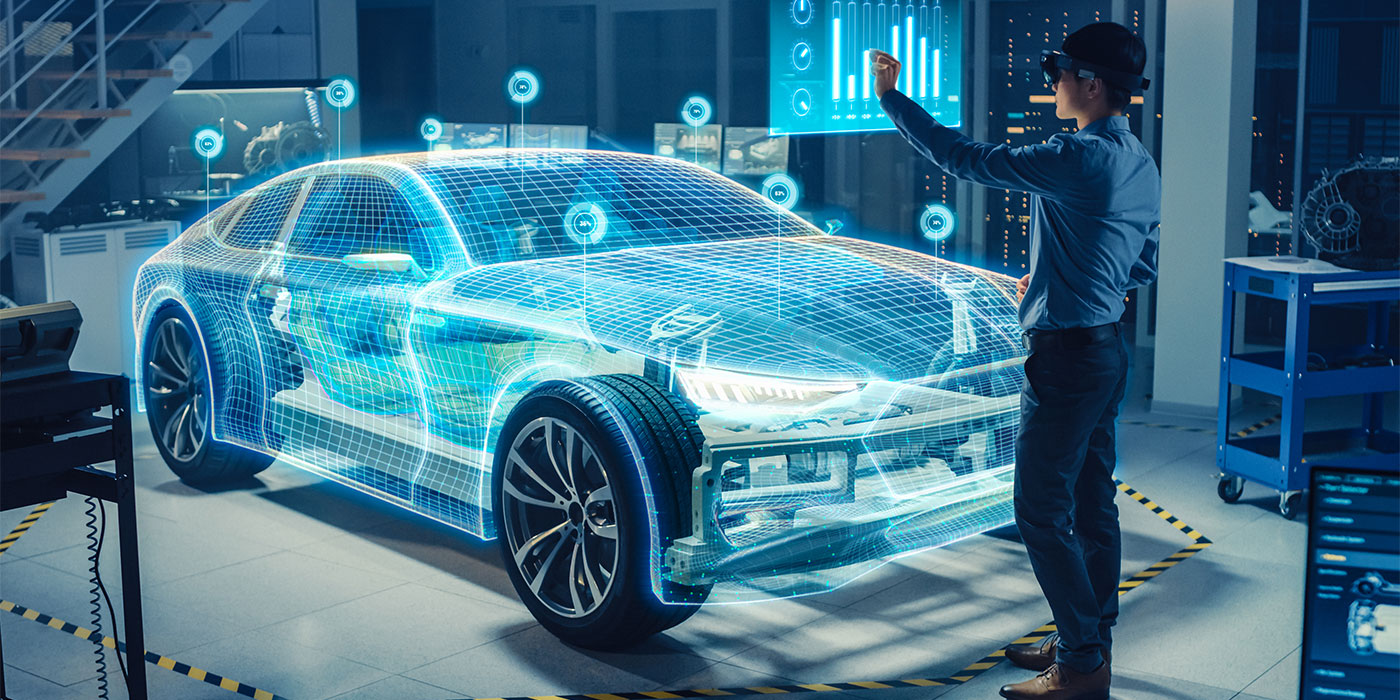When the first driverless vehicle pulls into your shop’s lot, the experience is likely to be unreal. Sure, there will be quarter panels to paint and bumpers to repair. However, there will be a brave new world of electronic gadgetry to deal with, too.
Feel the Buzz
Automated vehicle technology (AVT) got unprecedented buzz at the Consumer Electronics Show at the start of 2015. Manufacturers were able to go beyond presenting the usual concept car hype and offer specific technology that would enable the automated vehicle of the future to interface with its human occupants.
A consortium of automakers grabbed headlines with the announcement that they’re developing vehicle-to-vehicle and vehicle-to-infrastructure communications platforms for crash avoidance. However, that’s no guarantee crashes will be avoided. And Google has a patent on technology that allows its experimental fleet of cars to operate without a driver. Volvo, Mercedes, Mazda and Acura are among the top-end vehicles that already have AVT systems on some models.
Body shop owners scratched their heads and asked: What does this mean to me and my technicians?
Two Issues
There are two issues to consider: first, what changes in personnel and tools will be required for body shops to deal with repairs to AVT-equipped vehicles? Second, will AVT reduce the number of collisions so much that body shops will go the way of horseshoeing blacksmiths?
Research from the Highway Loss Data Institute (HLDI) says that if all passenger vehicles were equipped with forward collision warning, lane departure warning, blind spot detection and adaptive headlights, about one in three fatal crashes and one in five injury crashes could potentially be prevented or mitigated. Fatal accidents usually bypass body shops and go to scrap. However, a 20 percent drop in accidents resulting in repair could make a dent in the industry. Or would it?
“I’m not overly freaked out about it yet,” says J.R. Hubbard, owner of Selecta Auto Body in San Francisco. “As AVT gets more popular, you will have to adjust.”
Hubbard has been in the body shop business for 20 years and has seen red flags raised about other technology – pearl paints that were going to be impossible to match, vehicle wraps that would wreck the paint business, etc.
“We happily will change when the time comes,” he says.
Hubbard concedes, however, that in 2025, compared to 2010, there may be fewer accidents. However, he adds, there will still be plenty of people crashing into one another. “This is an opportunity for body shops to expand and grow.”
“This innovation (AVT) will increase the opportunity for body shops to separate themselves from competitors,” says Kye Yeung, owner of European Motor Car Works, Santa Ana, Calif. “The shops that embrace this new technology with training and new equipment will capitalize on its unique market.”
European Motor Car Works is in front of the crowd. They’re a factory-approved Aston Martin and Jaguar Authorized Aluminum Repair Center for “A” Structural and “B” Non-Structural repairs, as well as an approved center for Land Rover, Lotus, Tesla, Rolls-Royce Ghost and Corvette.
It’s little surprise then that Yeung expects that the key to success will be building a relationship with the vehicle brand.
“Specialized information can be sourced through proper channels and applied instantly on the shop floor,” he says. “But in my opinion, because of the different types of systems and calibration methods, it wouldn’t be cost effective currently to have specialized shops in AVT.”
Bye Bye, Body Shop?
“There is a lot of speculation that AVT will put shops out of business, but I don’t think this is the case,” says Aaron Schulenburg, executive director of the Society of Collision Repair Specialists. “There remain questions about whether systems will eliminate crashes. I don’t think they will put anyone out of business.”
In fact, he suspects that vehicle structural technology issues like advanced metallurgy, carbon fiber and aluminum body issues will be a more pressing issue in the next several years than AVT.
“AVT is only one issue,” he says.
Forward collision avoidance systems (FCAS), particularly those that can brake autonomously, along with adaptive headlights, which shift direction as the driver steers, show the biggest crash reductions, according to the Insurance Institute for Highway Safety’s Highway Loss Data Institute. Lane departure warning appears to hurt, rather than help, though it is not clear why. Other AVT systems, such as blind spot detection and park assist, are not showing clear effects on crash patterns yet.
Some vehicles already have FCAS, including adaptive cruise control.
Hubbard notes that, when the Ford F-150 first came out, everyone was worried about putting in aluminum stations. While Selecta did put in an aluminum station, he sometimes wonders if it made sense given how few of such jobs he has seen.
“I could have sublet that work to others,” he says. “You can always pass on doing a job.” The same holds for AVT repairs.
“I believe the initial AVT systems will be diagnosed by the OE dealers at first,” Yeung says. “Because systems will differ in design, equipment suppliers may offer a vast array of specialized tools to shop owners in this area in the future.”
Those repair jobs likely will come in two flavors: vehicle-to-vehicle (V2V) and vehicle-to-infrastructure (V2I) technology. Both use wireless communications. With V2V, vehicles transmit information regarding their actions to other vehicles. For example, in a line of cars, if the lead car suddenly brakes, this information will be transmitted to every other vehicle in the chain. Trailing vehicles would automatically begin braking when the lead vehicle’s signal is received.
With V2I communication, cars send and receive information to roadway infrastructure. Systems could monitor vehicle location within a lane. If it detects a car drifting out of a lane, the system would alert the vehicle. In cities, traffic signals would alert vehicles of an impending light change so drivers can prepare to stop.
Not So Soon
The joke going around the industry is that Car & Driver magazine will have to change its name to Car. That will not happen soon. Schulenburg says it will be some time before we see universal AVT.
“It will take a long time before this happens,” he says. And research backs him up.
HLDI says it could be 30 years before AVT rules the road. While researchers acknowledge that cars that can talk to each other are just over the horizon, they do not see such vehicles dominating roads anytime soon. After all, it took about 25 years before antilock brakes became universal. And front airbags took about 15 years to spread through the vehicle fleet.
“Technology is changing fast, but it takes time for it to reach the majority of vehicles,” says Matthew Moore, an author of the report and vice president of HLDI, an Institute affiliate. “New features that prove beneficial aren’t instantly available in all new models. And once they are, not everyone rushes out to replace their old vehicle right away.”
It typically takes three decades for a promising safety feature first introduced in a few luxury cars to spread through the fleet. More precisely, it will take at least that long before 95 percent of vehicles on the road could have a given feature either because it came as standard equipment or was offered as an option, HLDI researchers say. For instance, it won’t be until 2016 that 95 percent of all registered vehicles could have frontal airbags, even though manufacturers began adding frontal airbags in meaningful numbers during the mid-1980s.
But shop owners shouldn’t sit on their hands.
“Shop owners who choose to ignore new challenges in vehicle technology will minimize their ability to compete in the future.
Yeung believes that specializing in vehicle brands will help direct the consumers to shops’ door. “Shops that have a strong relationship with dealerships will always have an advantage whether it’s AVT or any other type of system. Creating relationships with the OE or vehicle brand will help accelerate the education and training required to perform these repairs.”
Remember, electronic stability control (ESC) was introduced in 1995 models and was standard on just 10 percent of 2000 models and optional on four percent. Since the technology dramatically cuts crashes, particularly rollovers, NHTSA required that ESC become standard on all passenger vehicles by model year 2012. HLDI predicts that 95 percent of registered vehicles in 2029 will either come with ESC standard or have it available as an option.
All this does not mean that there will be no vehicles with AVT on the road in the very near future. Even brand-new cars get into wrecks.
“There is nothing that will stop that 2015 Camry from crashing into your (AVT-equipped) Volvo,” Hubbard says (see sidebar below: It Does Work: Insurance Stats). When that happens to a customer, be prepared.
“The correct process is to embrace AVT as any new technology, understanding the potential of distancing yourself from your competition,” Yeung says. “Relying on older methods of diagnostics and ignoring new equipment requirements could be detrimental to the success of any shop owner,” says Yeung, who founded European Motor Car Works in 1975 – not a surprising philosophy for a guy who was inspired to get into the auto business when he heard the 1964 hit “Dead Man’s Curve” by Jan & Dean.
While Hubbard concedes that OEM-certified body shops will get repair technology first, he does not fear any exclusivity there. San Francisco has a good body shop community, he notes. “Manufacturers want to make it so you can repair their cars,” he feels.
Hubbard is not overly concerned that he will have to hire computer gurus to deal with AVT. “Most of the technology is just control modules,” Hubbard notes. “We’re replacing control modules all the time. You don’t have to be a computer scientist to do that.”
“This opens a business opportunity to do more scans and diagnostic work,” Schulenburg says. That is because the computer and radar technologies will have to be checked.
“I strongly believe that the advanced technology will require some form of specialist on site to diagnose and perform this type of repair,” Yeung says. And, he wants to be paid fairly for that expertise. “We, as an industry, continue to be undercompensated for labor. Some insurers refuse to acknowledge the additional skill sets to accomplish advance vehicle repair techniques.”
Training
Schulenburg says all of this change will increase any shop’s expectations of expertise from its technical staff. Today, there is more need for shops with the ability to maintain pace to keep up with the changes in the industry, he says.
“Embrace the changes. Look to education. Invest in training and equipment. As the technology demands increase, there will be a larger separation between those who embrace change and those who do not.”
Yeung expects this trend will force shop owners to look outside the box for technicians. “Because of the highly technical nature of diagnostics and electronics, average body techs may have trouble acquiring the necessary skills for this new trend of repair,” he concludes.
It Does Work: Insurance Stats
Volvo’s City Safety, a low-speed front crash prevention system, is one AVT feature that is proving to be effective. The system is designed to help a driver avoid rear-ending another vehicle in slow-moving traffic.
HLDI compared insurance claims for 2011-’12 Volvo S60 sedans and 2010-’12 Volvo XC60 SUVs equipped with City Safety with claims for other 2011-’12 midsize luxury cars and 2009-’12 midsize luxury SUVs. The XC60s had 15 percent fewer claims under property damage liability coverage, which pays for damage to vehicles that at-fault drivers hit.
The S60s showed a similar reduction, with 16 percent fewer property damage liability claims in vehicles with the technology. There also were fewer claims under bodily injury liability coverage, which pays for injuries to people in other vehicles, and collision insurance, which covers damage to the insured vehicle.
In separate analyses of front crash prevention systems that function at higher speeds, HLDI found 14 percent fewer insurance claims under property damage liability coverage for Acura and Mercedes-Benz vehicles with forward collision warning and automatic braking than for the same vehicles that weren’t equipped with the technology. Mercedes offers a version of forward collision warning that does not include autobrake, which also showed lower crash rates but not to the same extent as the version that includes it.
How it Works: A Personal Look
When NHTSA mandates front crash prevention systems (FCPS) and features like adaptive cruise control (ACC) on all cars, we’ll have to learn to drive with them – as well as repair them. I, for one, am willing to wait for them to become universal. FCPS uses various types of sensors, such as cameras, radar or LIDAR (light detection and ranging) to detect when a vehicle is getting too close to one in front of it. Most systems issue a warning and precharge the brakes to maximize their effect if the driver responds by braking. Many systems brake the vehicle autonomously if the driver doesn’t respond. Sometimes, automatic braking is activated without a preliminary warning. An autobrake system may not always be able to prevent a crash but will reduce vehicle speed, mitigating crash severity.
Having driven a vehicle with ACC on Colorado highways for three days, I came away unimpressed. Coming up behind a slow semi-truck that you need to pass on a steep hill? ACC automatically reduces your speed as you approach the back of the truck – just when you need more power to complete a safe pass. It’s even worse on the interstate. Typically, a line of vehicles forms behind a slow-moving motor home. The FCPS disengages the cruise control so your speed is reduced as you pull into the passing lane. Result: overtaking vehicles have to brake (and often use their horn or middle finger). I wonder how many near rear-end incidents ACC causes in such situations?
While I concede the value of ACC and FCPS to reduce the severity of collisions, especially at low speeds or in parking lots, I fear their automatic nature. Perhaps it’s an awareness issue on the part of a driver unused to the system. It took a while to learn to stand on anti-lock brakes no matter how much they chatter. Front-wheel drive systems have a different feel in snow and skids.
HDLI says appropriate driver responses and acceptance of AVT are critical to their success. If drivers, like me, find the systems annoying, they may disable them. Similarly, if drivers experience warnings but don’t understand them, don’t trust them, are overwhelmed by them or don’t take an appropriate corrective action, then the systems will be ineffective. Early research using simulators has shown collision warning systems can redirect the driver’s attention to the road and improve reaction time, but little is known about how drivers respond in real-world driving.

